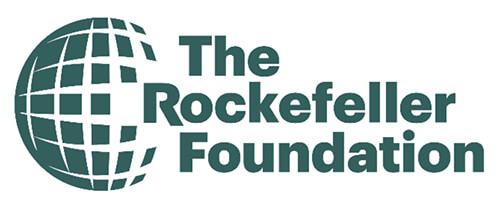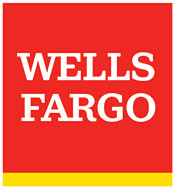Checklist of Best Practices for Program Administrators
Section 1: Planning an Equitable Engagement Process
1. Begin with a landscape analysis.
- Analyze relevant existing policies, programs, and stakeholders; the existing building stock; community relationships; the workforce; and potential partners.
2. Design equitable engagement activities.
- Design engagement activities in partnership with CBOs and other stakeholders. Understand the difference between community and stakeholder engagement and undertake intentional and inclusive engagement that builds shared vision and capacity with the community.
- Center marginalized and underrepresented groups in all engagement and ensure that their perspectives are reflected in the leadership and decision-making structure of the planning process.
- Compensate community-based organizations and community members involved in the planning process. Identify and address barriers to participation by providing childcare, meals, and transportation to and from meetings. Choose accessible meeting times and locations.
Section 2: Identifying Your Community and Upgrade Priorities
3. Identify program focus areas.
- Using community data and community priorities, establish clear racial equity, housing, workforce development, health, and environmental justice goals for both engagement activities and program outcomes.
- Alongside other program goals, make greenhouse gas emission reductions a metric for program success.
4. Establish program upgrade offerings.
- Prioritize comprehensive efficiency upgrades and electrification in program offerings.
- Pair electrification of heating and cooling equipment and building envelope upgrades with onsite generation to help ensure that energy bills do not increase.
- Avoid installing new fossil fuel appliances.
- Include passive strategies for reducing energy costs, including shading, green roofs, and cool roofs.
5. Design program offerings to prevent increased household costs and displacement.
- Protect housing affordability for unsubsidized rental properties that are not subject to pre-existing affordability commitments.
- Minimize temporary disruptions and permanent displacement risks due to upgrades.
- Reduce energy bills and operations costs for rental property owners, homeowners, and renters.
- Get involved in or begin electricity rate-setting discussions with relevant stakeholders.
- Provide education to building owners and renters on how to control energy costs.
Section 3: Crafting a Well-Designed and Equitable Program
6. Create an easy-to-use program intake, participation, and support process.
- Employ a “one-stop shop” approach with a single point of contact for participants.
- Offer a single entry point to the program, and create a “no wrong door” approach.
7. Design program in coordination with partners.
- Ensure that program elements coordinate with existing programs provided by utilities, nonprofits, and local and state agencies.
- Establish robust partnerships with CBOs and a diverse range of stakeholders.
8. Prioritize the most energy insecure LMI households to receive upgrades.
- Target offerings to LMI households and ensure that multiple ownership structures and types of affordable housing (including both subsidized and unsubsidized) are eligible for program offerings, depending on community needs.
9. Build accountability into the program.
- Plan and budget for regular evaluation and adjustment to ensure the program is making enough progress toward goals.
- Establish processes for regularly reporting back to engaged communities for transparency and accountability.
- Establish community and/or workforce benefits agreements between the program and community members.
- Provide for quality assurance/quality control (QA/QC) inspection, project wrap-up, and ongoing monitoring of finished projects.
10. Ensure the program provides health and safety measures.
- Incorporate upgrade offerings, such as mold and asbestos remediation, that improve resident health, safety, and comfort. Ensure program provides or engages existing pre-weatherization offerings to lower barriers to participation
- Require that service providers use healthier building materials that minimize harm to manufacturers, installers, and building occupants and use best practices for ventilation and promoting indoor air quality.
11. Ensure the program streamlines how users access funding.
- Leverage and layer a variety of funding sources.
- Provide a menu of available financing options and explain them transparently.
- Cover a large share (at least 75–80%), if not all of the total upfront cost of scopes of work.
- Maximize the use of non-debt funding over debt for the program’s work. When using loans, make no-cost, low-cost, or forgivable loans available.
- Ensure financing options do not burden low-income households, include financing options for participants with low or no credit scores, and have proper consumer protections in place.
- Include supplemental funding sources to pay for needed structural, electrical, plumbing, and other health and safety repairs that pose barriers to participation.
- If possible, cover the full cost of replacing failing or unsafe appliances.
12. Ensure the program helps build out a local green workforce.
- Compile a list of workforce certifications and credentials for program service providers.
- Provide resources for potential job candidates in the community regarding existing training programs.
- Identify barriers to building a diverse workforce and deploy strategies to hire local under-represented groups into good paying local jobs.
- Identify product suppliers from diverse and under-represented groups and incorporate them into program offerings.
- Provide or link to opportunities for upskilling, credentialing, and certification for the existing workforce.
- Provide education to contractors in related trades on the benefits of adding efficiency and electrification work to their current services
- Encourage program service providers to pay prevailing wages where not already required.
- Provide support and help contractors bring on apprentices to create long-term career pathways in building upgrades.
- Provide training to service providers on the impact of quality processes and practices on long-term building performance.








